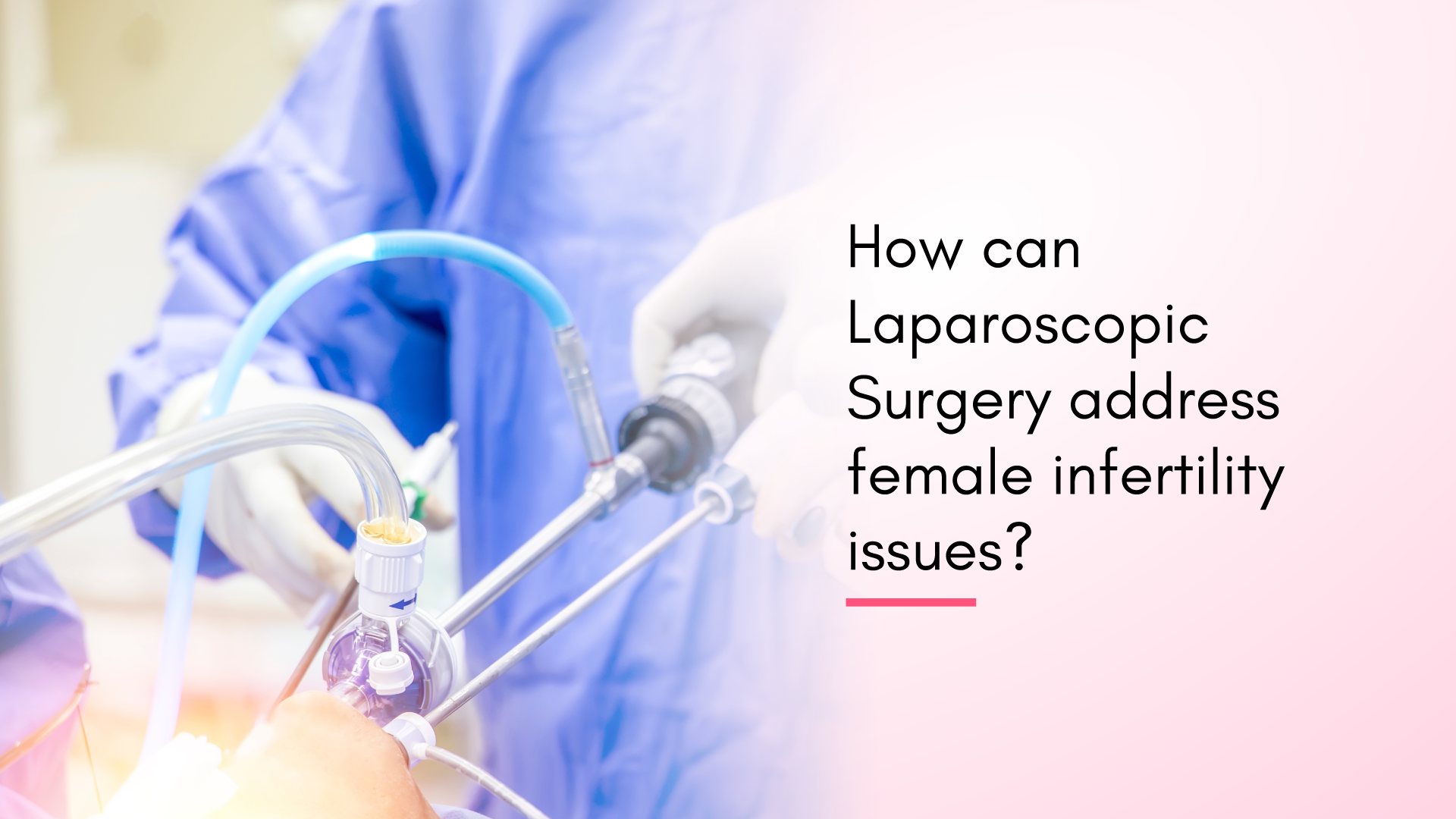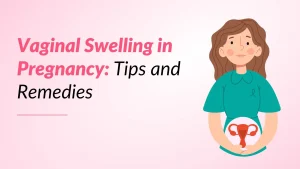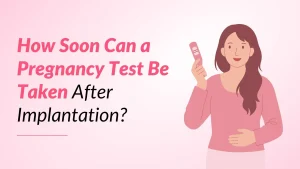Laparoscopic surgery offers a beacon of hope for couples struggling with female infertility. This minimally invasive procedure has revolutionized the treatment of various reproductive issues, providing effective solutions with reduced recovery time. By addressing conditions like endometriosis, fibroids, and blocked fallopian tubes, laparoscopic surgery can significantly improve fertility prospects, bringing many couples closer to their dream of parenthood.
What is Laparoscopic Surgery?
A laparoscopy allows a surgeon to examine internal organs without creating a large incision. It can identify and occasionally treat problems in the pelvis or abdomen.
A surgeon creates a tiny incision, generally no more than half an inch long, near the umbilicus to perform a laparoscopy. The surgeon inserts a long, thin tube containing a camera into the body through the incision, which is referred to as “laparoscopy.” Because laparoscopy involves fewer incisions than traditional “open” surgery, it is also referred to as “minimally invasive surgery” or “keyhole surgery.”
If imaging tests, such as MRIs, ultrasounds, and X-rays, haven’t shown enough details to support a diagnosis, laparoscopy may be used to confirm the diagnosis. The test is frequently used to aid in the diagnosis of:
- Digestive disease
- Urinary disorders
- Disorders affecting the uterus, ovaries, and fallopian tubes in females
- Examining organs for malignancy and collecting tissue samples
Also read: How Ferty9’s Fertility Counseling Services Address Your Specific Needs?
Laparoscopy and Infertility in Women
Infertility is defined as the failure to become pregnant following 12 months before age 35 and 6 months above age 35 of consistent, unprotected sexual activity without a known reproductive abnormality. With the increased success rates of assisted reproductive technologies (ART) and nearly four decades since the development of in vitro fertilization (IVF), laparoscopy remains a component of infertility treatment. Women with symptoms of uterine fibroids distorting the uterus cavity, endometriosis, tubal adhesions, and a history of tubal sterilization are diagnosed and treated with laparoscopy.
Laparoscopy can help in the diagnosis and treatment of several conditions that affect fertility, such as:
- Endometriosis, Fibroids
- Blocked fallopian tubes
- Buildup of scar tissue
- Other abnormalities of the reproductive system
Suggested Read: Advanced IVF Fertility Labs: What’s New at Ferty9?
Laparoscopy Surgeries for Fertility Issues
Endometriosis is a condition where endometrial tissue grows outside uterus. Endometrium tissue breaks down and bleeds during the menstrual cycle, producing pain and discomfort .It can cause chocolate cysts in ovaries and may affect fertility in several ways. Adhesions and scar tissue can build up over time, limiting normal function and leading to infertility. Scar tissue, for example, can obstruct the egg’s path through the fallopian tubes by distorting anatomy of tubes or prevent it from implanting on the uterine lining. Laparoscopic endometriosis surgery is a typical therapy for endometriosis that can improve success of fertility treatments especially in severe grades of endometriosis.Following a laparoscopy to treat endometriotic lesions, there is a higher likelihood of conception.
Uterine fibroids are non-cancerous growths that emerge from the uterine muscle tissue. They can cause infertility especially when they are close to endometrial cavity which may cause recurrent abortions or recurrent implantation failure in IVF .While most women go through pregnancy successfully with fibroids, around 10-30% encounter difficulties as if they are huge can cause discomfort and severe pain. Laparoscopic myomectomy is an effective therapeutic option in women who encounter with problems due to fibroids while on infertility treatment or in pregnancy. This operation helps to eliminate fibroids without removing vital uterine tissue.
Laparoscopy and laparoscopic ovarian drilling (LOD) is a procedure performed on women with polycystic ovary syndrome (PCOS), provided they have a good ovarian reserve. Sometimes in couples with unexplained infertility , a diagnostic laparoscopy may be necessary to identify any underlying pathology causing infertility .
Risks associated with laparoscopy for tube blockage
Following an infertility laparoscopy procedure, the most common adverse effects are:
- Mild to severe discomfort,
- Tightness in the muscles of your abdomen and
- Pain in the abdominal wall surrounding the incision(s).
Although laparoscopic surgery is usually safe, certain concerns may eventually compromise fertility. The uterus, ovaries, or fallopian tubes might get damaged or scarred as a result of this surgery. These injuries could make it more difficult to become pregnant. An ectopic pregnancy—a potentially dangerous pregnancy in which the embryo implants inside the fallopian tube rather than the uterus—may also be a possibility in a woman whose fallopian tube is blocked by scar tissue.
Also read: Can Fallopian Tubes Cause Miscarriage?
How Does Laparoscopy Treat Blocked Fallopian Tubes?
The fallopian tube is an important site where fertilization occurs and its normal activity is required for natural conception. Tubal blockage is a prevalent cause of infertility. Scar tissue or pelvic adhesions are common causes of fallopian tube blockage. These patients seek to unblock their blocked fallopian tubes and restore reproductive function. If small amounts of scar tissue or adhesions obstruct your fallopian tubes, your doctor can utilize laparoscopic surgery to remove the obstruction and open the fallopian tubes, thereby increasing the chance of conception.
Laparoscopic examinations are the gold standard for determining infertility caused by fallopian tube issues. It may be employed to identify and release adhesions around the tube , fimbriae agglutination,treat hydrosalpinx, flush and remove any blockage and restore tubal patency.
Laparoscopy can precisely distinguish between pelvic and fallopian tube adhesion, assess the fallopian tube’s anatomy and interactions with other tissues and organs, and diagnose conditions such as pelvic endometriosis.
Also Read: Managing Polycystic Ovary Syndrome (PCOS) Without Losing Weight
Benefits of laparoscopy surgery for female fertility
In comparison to other surgical procedures that can assist a doctor in discovering the reason for infertility, a laparoscopy includes the following:
- Less invasive approaches.
- Reduced probability of infection
- Smaller scars
- ability to address any undetected pathology leading to infertility
- Faster recovery
Also Read: Trying to Conceive? Expert Tips for Boosting Your Chances
Recovery Time and Post-surgery Care
Most patients recover quickly after laparoscopic treatments. Depending on how you feel and how quickly you recover, you may need to take few days to two weeks off from work. Small incisions (cuts) on your body’s surface will heal rapidly, but deeper wounds may take several days to a few weeks to recover.
- Do not lift anything heavier for four to six weeks.
- Taking high protein diet and having plenty of oral fluids .
- You’ll have little bandages or surgical adhesive that will last seven to ten days. Do not remove them; they will fall off on their own. Doing a review checkup to assess wound healing and general well being .
- Avoid placing anything in your vagina, such as a tampon, or having sexual intercourse for two weeks.
Also read: Why is Fertility Tourism on the Rise in India?
Conclusion
Laparoscopy plays a vital role in the diagnosis and treatment of infertility. The significance of laparoscopy in these patients leads us to develop a new paradigm to help physicians plan their treatment. Many infertile women, including those with tubal factor, PCOS, endometriosis, and unexplained infertility, might benefit from it.



























